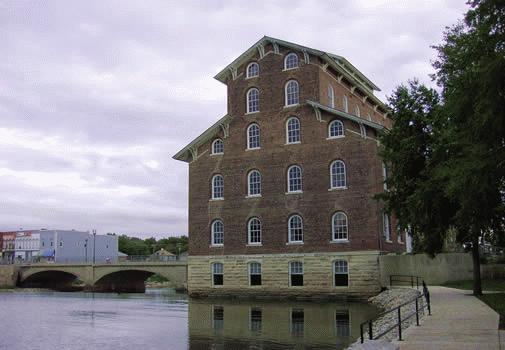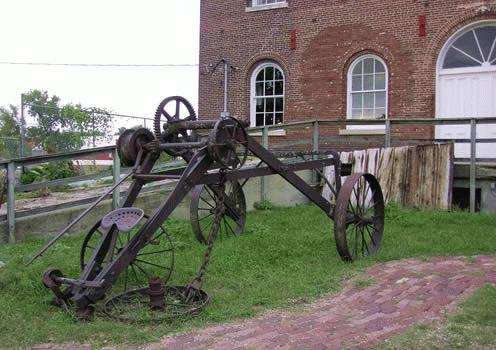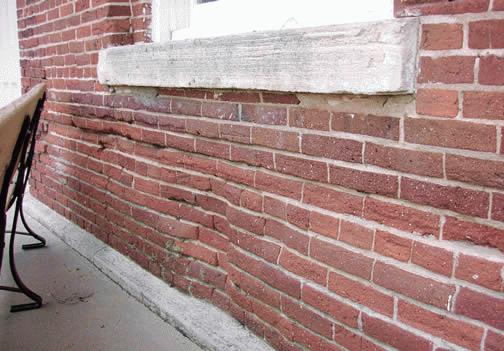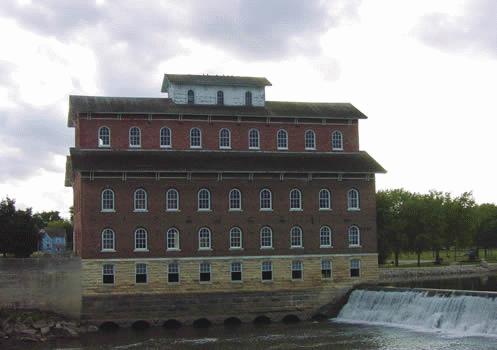Wapsipinicon Mill
Buchanan Co. | Iowa | USA
Watersource: Wapsipinicon River.
Wapsipinicon Mill
In the west center of Independence, Iowa on 1st St. West/ Sh 939 about 3.5 blocks west of the junction with Sh 150/3rd Ave SE, at the west end of the bridge over the Wapsipinicon River, north side.
The six story brick mill on stone foundation measuring 62'X 102' replaced an earlier 1851 mill after its 1867-1870 period of construction Samuel Sherwood built this best flour mill west of the Mississippi River. The main structure is of heavy timber frame, mortise and tenon joints with square nails and wooden pegs of oak for strength. Wooden shingles covered the roof, 107' above mill base. The complete price tag of the mill and it's water rights came to $100,000, a tidy sum for the 1870's.

The mill is situated on the west bank of the Wapsipinicon River at the dam. The mill produced it own electricity from 1915 on; power for the Gedney Hotel via an under-river cable; and later, the mill lighted the whole town for a while. Rollers replaced the millstones; the original water wheel was replaced by turbines, then the steam boiler & a gas engine of one cylinder power came into use; finally, electricity powered the corn sheller and attrition mill and mixer of more recent times.

The horse drawn stone puller used to pull the massive granite boulders from the Buchanan Co. prairie. These boulders were transported to the mill site, dressed and sized for the foundation material of the mill with the help of Alex Hathaway and Samuel Sherwood. The walls of stone above this level are of Farley Limestone.

The west side of the mill showing deep grooves along the wall of the wagon hubs that scraped the bricks as the farmers got as close to the mill wall as possible, to ensure that no grain, corn or meal fell to the ground to be wasted. The old millstones were last used in 1942 by Jesse Zimmerly and Fred Potts, to fill an order for the Burris and Soener Cafe, in town, for a ton of buckwheat flour for pancake fixins'.

The mill was placed on the National Register of Historic Places in 1975 by the Oliver Greenleys. The following year the mill was turned over by the Greenleys to the Buchanan County Historical Society. The lower "floating floor" needed work after many floods, as did the roof, some outside walls and brick facing in many places. this was done about 1993 in part of a major $300,000 restoration effort. Resoration is on-going, as the mill is a museum of displays and exhibits depicting 1870's grain milling in the Midwest.
*Update: Again in 2008 and 2010 there was major flooding on the Wapsipinicon River which caused damage. FEMA, through the historic branch, was able to help with the meal floor and foundation - which is still an ongoing project. The historical society is now looking for additional grants for the roof. Updated picture shows the mill during the flood of July 2010. Photographer-Mark Blaker, Independence, Iowa. Leanne Harrison 03/12/2011*